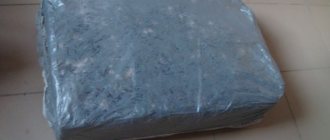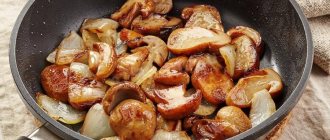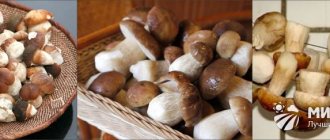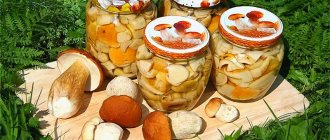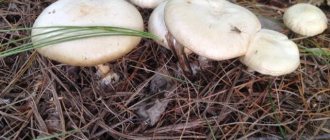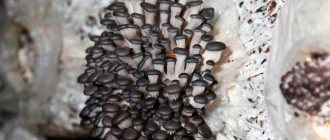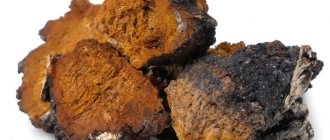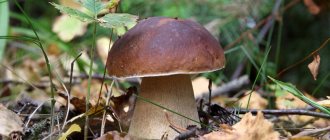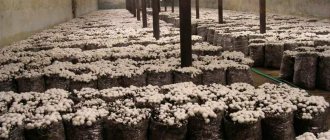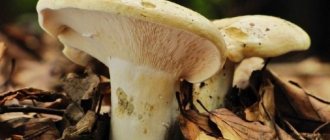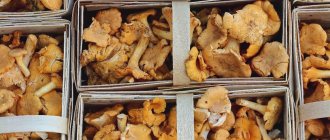Porcini mushrooms are part of the Boletaceae family and have a tubular structure on the inside of the cap. They are valued for their large size, exquisite taste and richness in beneficial microelements.
Picking a basket of noble boletus is a great success. But what if you don’t count on fortune, but set up a mushroom kingdom in your backyard or even in your apartment. If you follow the technological process, growing porcini mushrooms at home is quite possible even for beginners.
Growing methods
Growing porcini mushrooms at home is possible in the following ways:
- extensive - in a natural environment, in courtyard areas under the sky;
- intensive - in enclosed spaces using special equipment to create the necessary conditions for a person.
According to the method of propagation of mushrooms, there are two methods for breeding:
- breeding porcini mushrooms with spores at home;
- using parts of the mycelium (mycelium).
Boletus mushrooms: we grow them ourselves at home
By creating the soil of the correct composition, you can successfully master the cultivation of porcini mushrooms in your garden plot. For example, amateur mushroom grower M. Lavrentiev grew porcini mushrooms on his plantation (area 12 m2). His harvest reached up to 50-60 pieces per square meter. The composition of the soil for sowing is known. On a layer of fresh horse manure (12-15 cm), he laid a mixture containing 40% turf, 30% rotten leaves, 20% rotten wood, 10% clay.
Many beginners are interested in how to grow porcini mushrooms in the country. To do this, you need to prepare a bed. Buy seed material. Having chosen a dark place under the crown of deciduous trees, we fertilize the bed, level the ground and add planting material to the prepared soil using one of the indicated methods.
You can grow porcini mushrooms (by populating them with mycelium) on logs (any logs except white acacia and black walnut, not contaminated with other mushrooms). By the way, they are the most delicious. The log is buried a little in the ground, sprinkled with fertilized soil and, after sowing (introducing “mushroom dowels”), watered abundantly, sprinkled with chopped straw on top. Reproduction for the next year - from a few mushrooms to the appearance of mushroom families, and a year later - a whole mushroom plantation. Of course, this method is suitable for amateur mushroom growers and novice businessmen to test technologies.
Today, scientists have developed special varieties of boletus mushrooms, which have made it possible to grow porcini mushrooms in a film or glass greenhouse. The main requirement is minimal illumination and protection from direct solar radiation, maintaining high humidity. To do this, place small containers of water (with regularly turned on sprayers) for irrigation at a distance of up to two meters. Sawdust is good for retaining moisture.
The porcini mushroom is grown on a specific substrate. To prepare it, you should purchase soil and mix it with sawdust, manure, compost and organic fertilizers. The resulting mixture is infused for a week and stored in wooden boxes. It is better to grow boletus from purchased mycelium. After cooling the bag with mycelium, it is crushed, trying not to break the integrity of the bag. The substrate is mixed with mycelium in a box and sprinkled with a layer of soil not exceeding 7 centimeters. All that remains is to maintain the humidity, light and temperature of the room.
Some novice mushroom growers grow boletus mushrooms in an apartment and on a glassed-in loggia. The main thing is to maintain a constant temperature and high humidity of 80-90%, little lighting and planting material (mycelium) of proper quality.
Now let's look at how to grow porcini mushrooms in the basement of a house, sheds, hangars and other premises using intensive technology. Mix the substrate and mycelium, the latter should be up to 5% in the mixture. Having put it in bags (although boxes are better suited for boletus), the mixture is compacted, and the bags are placed vertically on the shelves, making cuts on one side for the growth of mushrooms. Next, it is important to regularly ventilate the room and water the crops.
The necessary conditions
Basic requirements for growing outdoors:
- A tree (birch, oak, pine or spruce) should be located nearby, since during symbiosis with it the fungus receives organic substances.
- It is advisable to have other mushrooms nearby.
- The soil should be sandy loam, loamy and at the same time drained.
- Litter in the form of moss and lichens is desirable.
- Good humidity (at least 70 percent).
- Temperatures range from 8 to 18 degrees.
When the site is ready, you can start planting the mushroom. This is best done from late summer to early autumn.
Basic requirements for growing indoors:
- Heating system to maintain the temperature around 18 degrees.
- Hoods for ventilation.
- Shelving for efficient space filling.
- Lamps with diffused light for good lighting.
- Containers for growing. These can be plastic pots or 6-liter bottles and other similar utensils.
- Treat the room with a sulfate solution and cover the walls and ceiling with a mixture of lime and copper sulfate before planting the mycelium. You can additionally use a smoke bomb.
How to prepare a basement or greenhouse
First of all, the basement must have a concrete floor, the room must be insulated and protected from external factors. To provide illumination to growing fruits, it is necessary to turn on the lamp for several hours a day. The light should be dim, diffused and evenly illuminate all the “beds”.
The basement must have ventilation. It can be natural, but if that is not enough, you can supplement it with fans and air purification filters.
To make it easier to navigate temperature and humidity indicators, a thermometer and hygrometer are installed in the basement. You can increase humidity by spraying the floor. If the basement area is too large, then it can be divided into several parts. So, in one part there will be seedlings, and in the second - grown fruits.
Before planting mycelium or spores in the basement, it is thoroughly disinfected, for example, using a formaldehyde solution. After these procedures, the basement is thoroughly ventilated.
In order to prepare the greenhouse, first of all, the film is painted over from the inside with a chalk solution or covered with dark agrofibre on top so that the lighting of the fruit is poor. Drip irrigation is most often used to maintain moisture levels in greenhouses. A hygrometer is installed to determine the humidity level.
Growing mushrooms in a greenhouse
To maintain a constant temperature in greenhouses, you can install a stove or fan heater, and also hang a thermometer in order to always know the temperature. The boxes with myceliums are not placed on wooden shelves, which need to be built first.
Substrate
The substrate can be purchased at a specialized store, or you can make it yourself. To do this you will need the following ingredients:
- sawdust from trees such as oak, aspen, birch, aspen and maple;
- pine bark and needles;
- dried moss;
- buckwheat pulp;
- cereal straw;
- sunflower seed husks;
- corn cobs and stalks;
- purified sand and clay (in a ratio of four to one).
All of the above ingredients are mixed, crushed in a special garden harvester and filled with hot water (but not boiling water) for 4 hours.
After that, all that remains is to strain and cool until the mixture springs slightly when squeezed in a fist and does not release liquid. Before planting, you must leave the substrate in a dry and warm room for two weeks.
Preparing planting material at home
It’s good to have a store nearby where you can buy porcini mushroom mycelium. But what to do when it's not there? That's right, prepare the seed material yourself.
But before you go into the forest for mycelium, you need to:
- Determine the place where your homemade porcini mushrooms will grow: under a birch, under a spruce or other tree.
- Set yourself up to pick mushrooms only under a certain type of tree. For example, if you plant porcini mushrooms under a birch tree, then you only need to collect boletus mushrooms under birch trees, etc.
For seed material you need only 10–15 mushrooms. Moreover, they can be either with worms or rotten, or healthy.
In mushrooms (already at home), the lower spongy layer under the cap (hymenophore) is cut off, passed through a meat grinder and diluted with water. The ratio of water to ground mushrooms is 7/2. By the way, the caps can be ground whole, the solution is still made in the same ratio. Some gardeners recommend adding alcohol to the water - no more than 4 tablespoons of alcohol per bucket.
The “mushroom” solution should sit for several days. During this time, the pulp of the mushrooms will float, and the separated spores will sink to the bottom. The top (floating) layer is carefully removed with a spoon or drained, but not thrown away - this procedure must be carried out several times, constantly adding fresh water to the bucket. After draining the water completely, you will get a saturated concentration of fungal spores. This is mycelium - the seed material of the porcini mushroom.
Photo of porcini mushrooms growing in strawberry plantings at the dacha
Selection of mycelium
The quality of the mycelium greatly influences the production of a rich harvest of porcini mushrooms. A good one is characterized by a rich orange color and the absence of a pungent smell of ammonia. You can buy it in a store, or make it yourself.
To prepare porcini mushroom mycelium at home, you will need ripe mushrooms with a whole cap, which is carefully cut off from the stem and passed through a meat grinder.
The resulting mixture is placed for 4 hours in a weak solution of potassium permanganate with sugar. The result is a nutrient mixture with fungal spores.
Expert advice
Experience in growing mushrooms has allowed us to identify some of the nuances of their cultivation. Whatever planting option is used, certain rules must be followed:
- you need to ensure that the ground is moist, if necessary, add drip irrigation;
- for planting, select a place in dense shade;
- plant mushrooms a maximum of 50 centimeters from the tree;
- In spring, add a growth activator to the soil;
- choose the time for planting from May to September;
- planting should be done during cool times of the day.
Porcini mushrooms take root rather poorly near fruit trees. It’s good when there are several forest trees, coniferous or deciduous, on a summer cottage. If they are not there, you can plant them near wooden premises - on the shaded side.
You can transplant a couple of young trees to your summer cottage that already have mycelium in their roots . However, this option is quite complex and time-consuming. It is not suitable for owners of small plots.
The result will depend on many factors: weather, time, mycelium, soil, watering, etc., but it will be worth it. Mushrooms that are grown on the site are practically not attacked by insects and do not differ in taste from their forest counterparts. You can also be sure that they are environmentally friendly, unlike mushrooms purchased on the market.
Landing
At the first stage of planting, drainage and soil are placed in the planting containers so that the mushrooms can breathe. Then a substrate of approximately 28-32 centimeters is distributed on top. The top is slightly pressed down.
After which the planting material is evenly distributed and sprinkled with the substrate again, but without pressing down. During planting, the temperature in the room should be kept at 25-27 degrees and remain so until the first shoots.
Care
The first shoots of boletus mushrooms can be noticed after just one week, and it is then that it is advisable to reduce the air temperature to 16 degrees. The soil needs to be watered daily with a spray bottle.
All necessary conditions and requirements for mushroom growth are maintained throughout the entire period. In order for the harvest to delight with ever larger shoots, you can additionally use ammonium nitrate in a ratio of one to five.
Collection
A month later, the first harvest appears. It is recommended to carefully twist it instead of cutting it with a knife. This way the mycelium will remain intact.
And the resulting hole needs to be sprinkled, then a new mushroom will grow in this place.
Uses of porcini mushrooms in cooking
After a basket of personally grown mushrooms has been collected, the task arises of preserving the harvest so that it does not spoil. This brings up two popular questions:
- How to dry porcini mushrooms at home.
- How to pickle porcini mushrooms at home.
Small and medium-sized mushrooms are suitable for drying. They are strung on a strong rope and hung in a well-ventilated and airy room, but without bright sunlight.
For pickling, it is better to take strong, unspoiled mushrooms. According to the classic recipe, the mushrooms are first boiled, then placed in a jar along with a clove of garlic, a bay leaf and poured with a pre-cooked marinade.
To prepare it, you need to wait until the water boils, add salt, sugar, citric acid, vinegar, and boil for 5 minutes. All that remains is to screw the lid on the jar and take it to the cellar. This appetizer goes perfectly with boiled potatoes.
About boletus
Porcini is just one of the many names for porcini mushrooms. And they are called differently: chistoviki, cow, bebik, bugbears, expensive mushroom, belevik, capercaillie, and of course, boletus mushrooms. But no matter what they are called, they look almost the same:
- The boletus cap is almost always brown. With age, only the convexity of the cap of the mushroom changes: from the semi-cylindrical shape inherent in a small mushroom, it gradually turns into an almost flat shape. The average diameter of an adult mushroom cap is approximately 20 cm.
- The leg of the boletus is always whitish in color with vertical brown veins. At first it has the shape of a barrel, and with age it turns into a powerful, dense cylinder.
